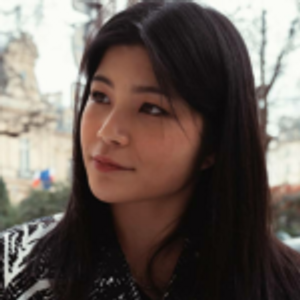
Meryll Rogge successfully debuted in 2019 right before the pandemic. The appeal of the brand is its multifaceted style that combines feminine embellishments and menswear-like tailoring, vintage textures, and contemporary elements into rare, real clothes. Immediately after her debut, Rogge’s artistically reimagined classics became highly acclaimed by buyers around the world, which led to her being selected as a semi-finalist for the LVMH Prize 2022.
In Japan, the brand is carried by BEAMS, EDITION, and the up-and-coming select store Visit For in Osaka, and has continued to grow steadily in Japan and abroad.
Meryll Rogge was born in the outskirts of Ghent, Belgium. After earning a bachelor’s degree in law, she moved to New York while attending the Royal Academy of Fine Arts Antwerp, where she began her career at Marc Jacobs. She then moved back to Antwerp to work as chief designer for Dries Van Notten’s women’s collection for four years before returning to her hometown outside Ghent with the launch of her self-named brand.
Rogge welcomed us into her home with her 7-month-old son in her arms. She had plans to move to a new atelier in the center of Ghent the following week, and mentioned that this was going to be the last time she would be photographed for an interview at this location. We asked her about what inspired her to become a designer, her clever creations, and the background behind the production of her collections, in the place where she’d been creating for years.
– I think fashion designers with law degrees are rare. How do you make use of the experience of learning law now?
Meryll Rogge: I wanted to study art history at the time, but my parents were against it since they thought there would be few job prospects for the major upon graduating. After much deliberation, I chose to study law, but studying something I’m not interested in was very tough. I even had to read through a 1000-page history book on Roman law… What I learned from that experience is a basic attitude toward work. No matter what kind of work you want to do, you need to be patient and focused in order to do what you want to do. Currently, the creative part of the process that I like doing is only 5% of everything I do. Most of my job consists of tasks in production, delivery, and shooting arrangements. If I expand my team in the future, I think I can take more time on what I want to do. Of course I enjoy those tasks, and it’s not a big deal for me because I like problem solving. Perhaps the reason I feel this way is because I learned to be patient in law school.
– You went to the Royal Academy of Fine Arts Antwerp after completing your law degree. Does that mean you’ve always been interested in art and fashion?
Rogge: I wanted to become an illustrator when I was a child. I specifically dreamed of working for Disney, but I started to question whether that was realistic in my teens. It was in high school that the option of being a fashion designer came up. I was sketching a clothed woman because I was bored in my Greek class, when the teacher saw it and said, “You might be suited to be a fashion designer”. This was an impressionable time, and I think my teacher’s words stimulated me. That was the first time I became aware of a possible future as a fashion designer.
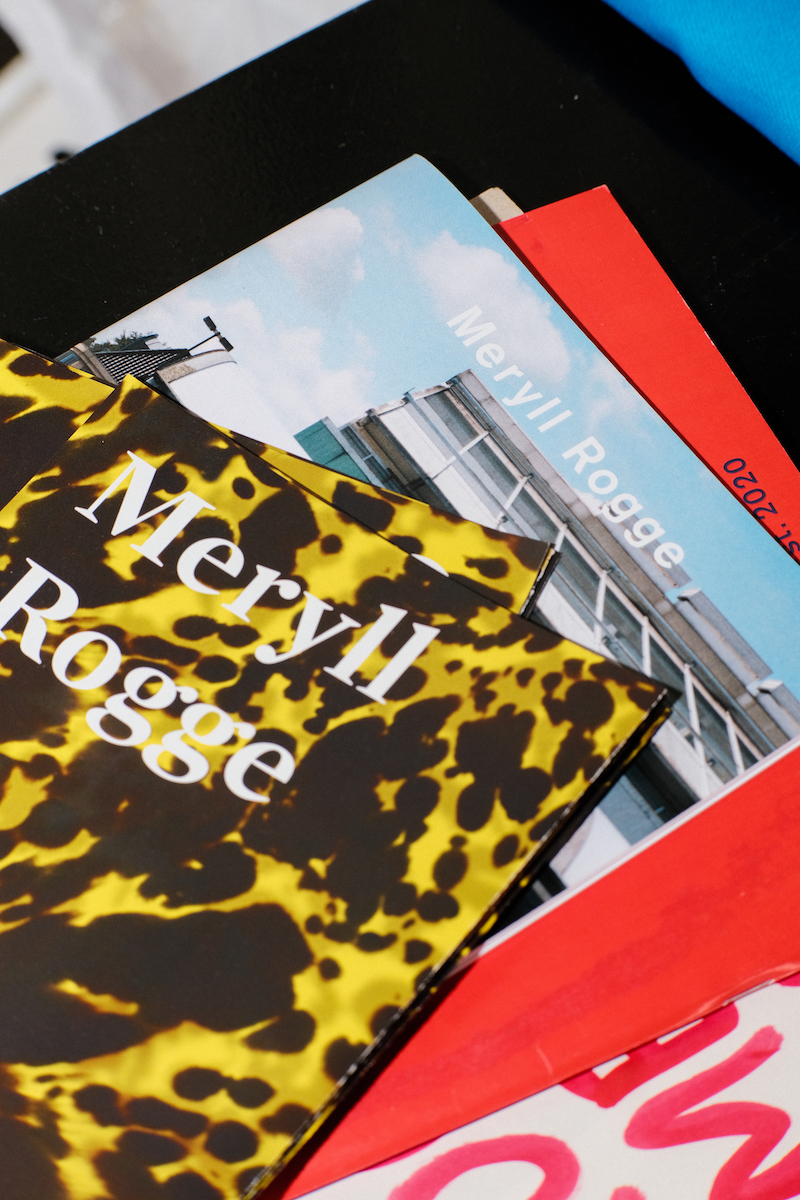
– As you accumulated experience in the fashion world, was your goal to have your own brand?
Rogge: Working for a brand and working for other people are important experiences, but I constantly had the desire to express my own worldview. I built the foundation of my career as a designer from ages 23 to 30 when I was in New York working for the Marc Jacobs design team. I learned a lot about collections, how to make fabrics, fittings, and working with suppliers and pattern makers, and then went on to further hone my skills at Dries Van Notten. I think I absorbed a lot from Doris, not only about making clothes, but also learned pointers on how to be a leader of a company.
– Are there any other designers that inspired you?
Rogge: Cristobal Balenciaga, Elsa Shiaparelli, and Christian Dior – designers who have left their mark on fashion history. I also admire the creations of Japanese designers like Rei Kawakubo, Junya Watanabe, and Kei Ninomiya, who attended the Royal Academy of Fine Arts Antwerp at the same time as me. Of course I was inspired by the Antwerp Six, but also by the current Balenciaga couture and by Martine Rose.
– When looking at past seasons, there seems to be a mixture of different elements rather than there being a specific source of inspiration. Where do you start when creating a collection?
Rogge: I follow my intuition. I start with research, come across different things, and evolve them. My team consists of full-time members and many freelance designers and pattern makers. The process of coming up with ideas and giving them a singular shape is one of the most enjoyable moments. Even if our individual ideas are different, we fine tune it little by little. We choose the fabrics, patterns, and colors in the beginning stages and experiment with shapes and design details while we research at the same time. I like the 60s to 80s retro style, so my basic design approach is a mix and match of conflicting masculine and feminine elements. And depending on that season and how we feel, we add colors, patterns, and embroidery designs.
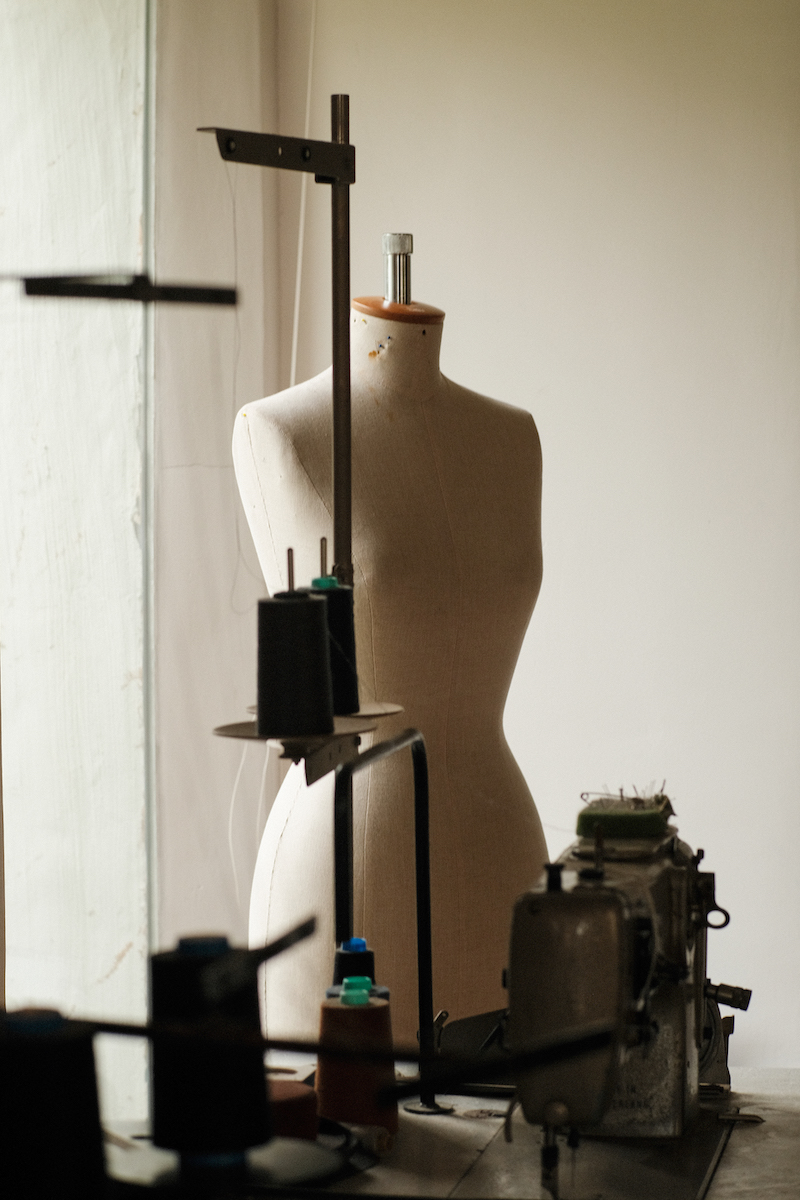
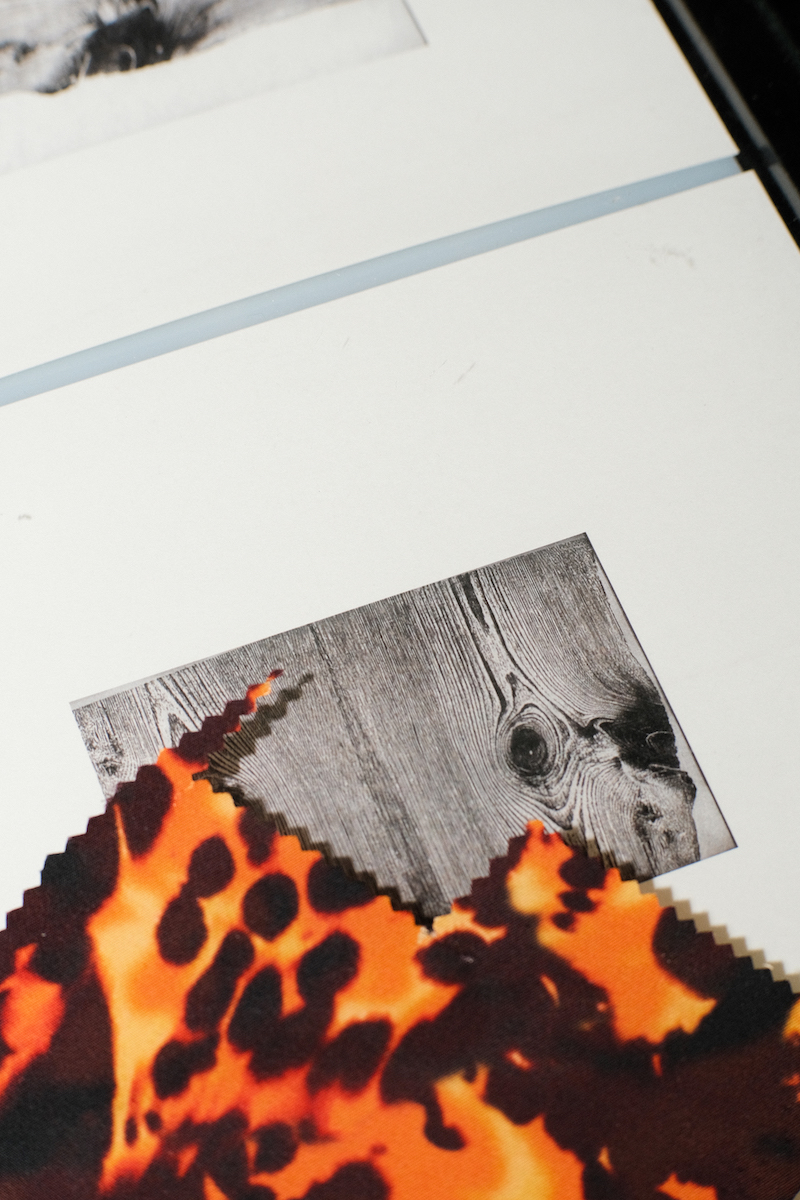

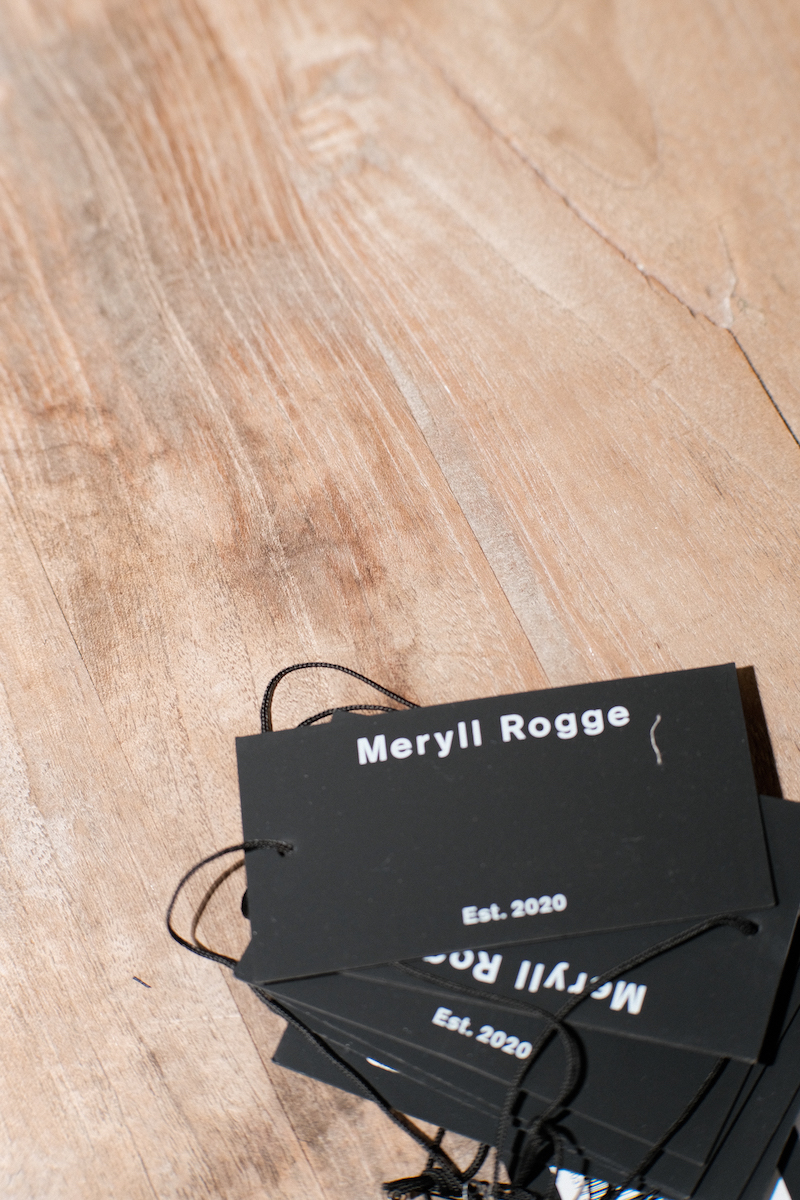
– Does that mean the creative process happens organically?
Rogge: It does. In most cases, we finally start to see the outline of the collection only a month before its launch. We’re able to grasp the full picture after continuously revising samples and creating stylings. It’s oftentimes at that point when we realize we’re not at all satisfied and start course correcting. That moment of realization is a nightmare. I’m experienced enough that I don’t panic, but I do get anxious (laughs). The last month feels like everyone’s in a bubble. Everyone is thinking the same thing, aiming in the same direction, and are doing what each of us must accomplish in order to complete the task in time. I think this part is a special and essential process because the collection is created as a result of the chemical reaction that occurs during that time in that bubble.
– Why did you name your brand new 2023-24 fall/winter season collection “Holiday Album”?
Rogge: I love the classic holiday mood of Christmas and New Years. The conventional holiday season mood where you decorate your tree, watch the movie Home Alone, and spend time with your family and close friends was the starting point for this collection. My teenage years were the Y2K boom years, and I remember during the holiday season going into the year 2000, everyone was talking about the end of the world related to the Great Prophecy of Nostradamus. The 2023-24 fall/winter collection was created by looking back on nostalgic holiday memories and adding luxury elements to cliche things.
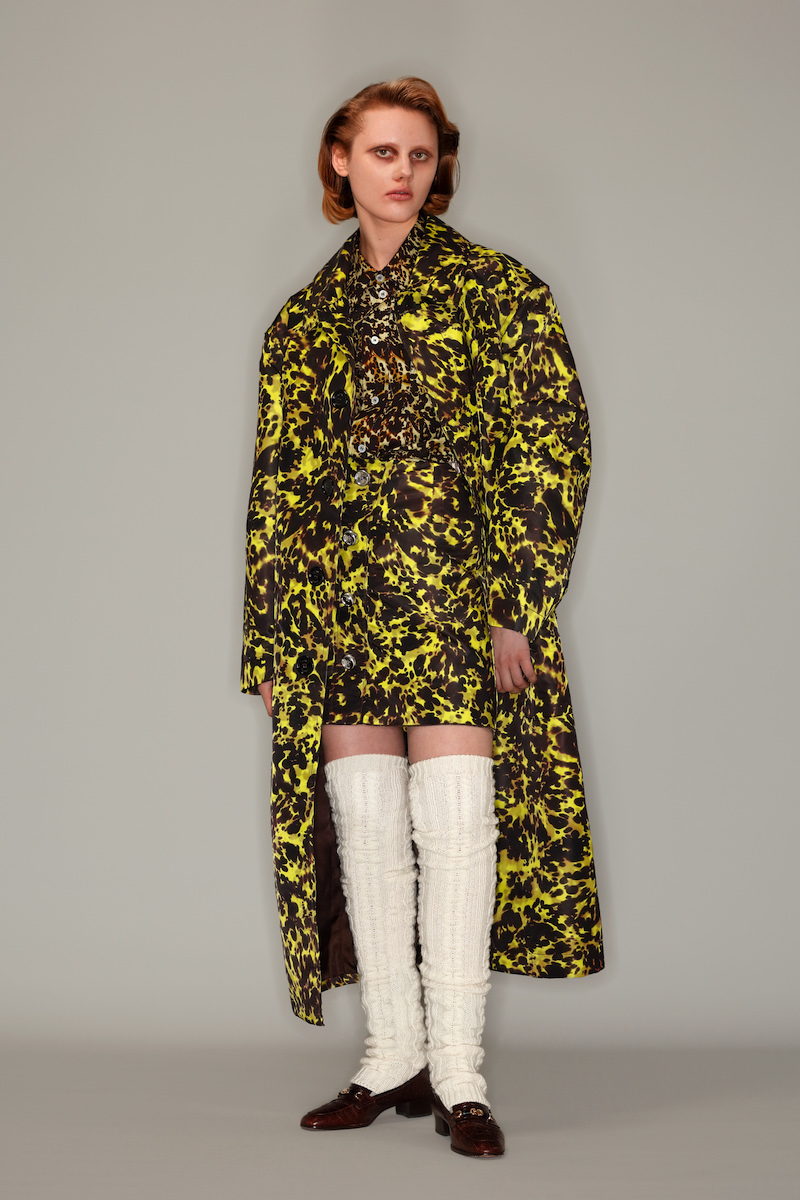
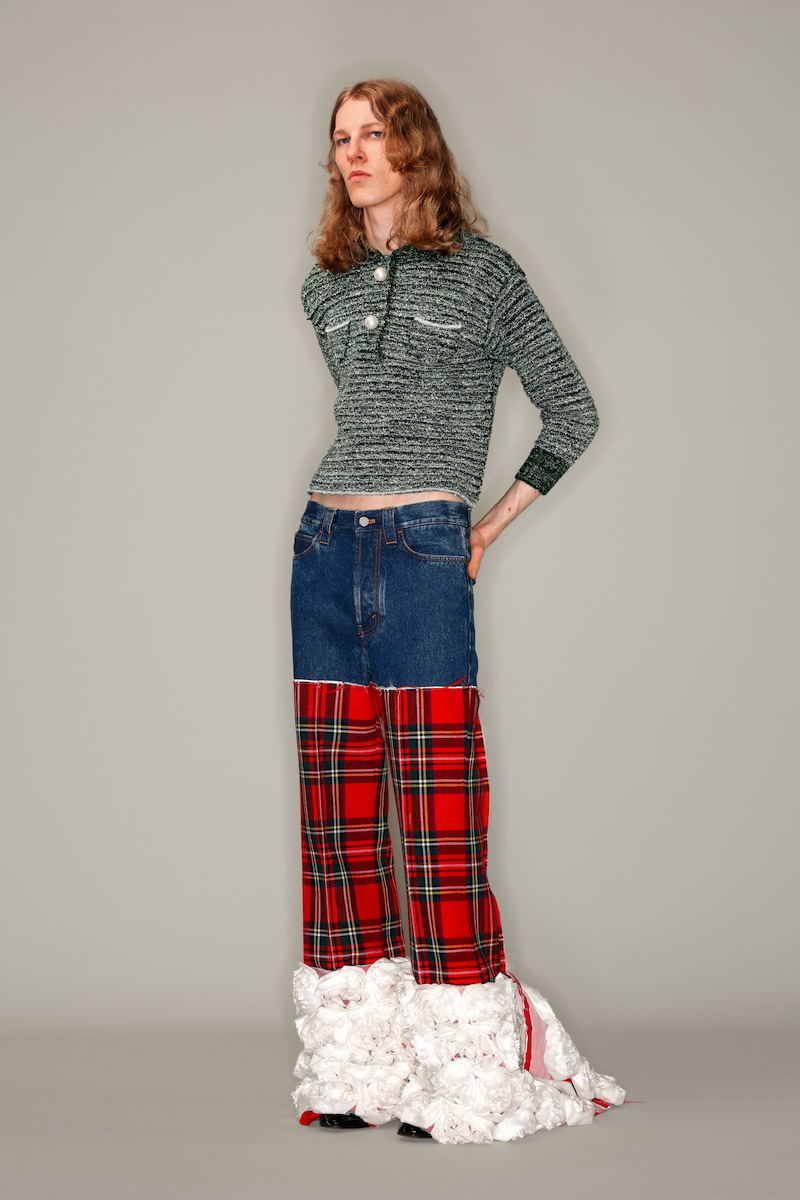
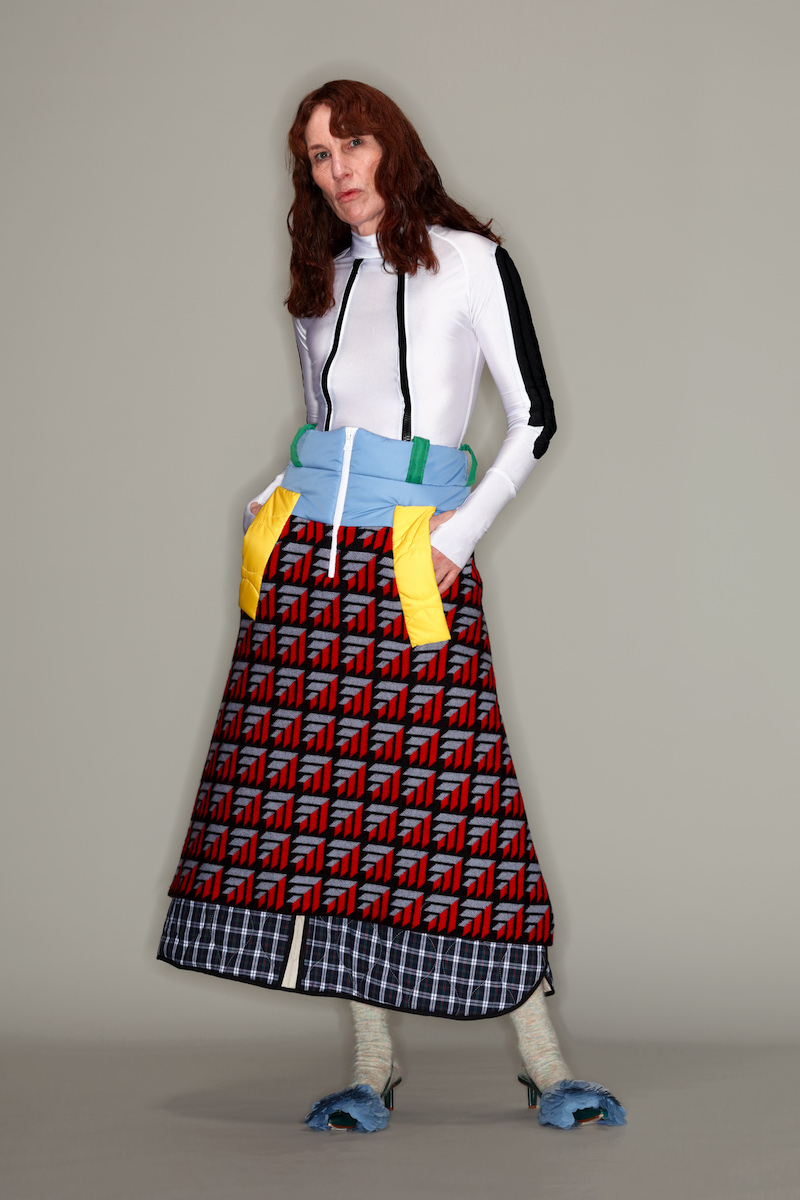

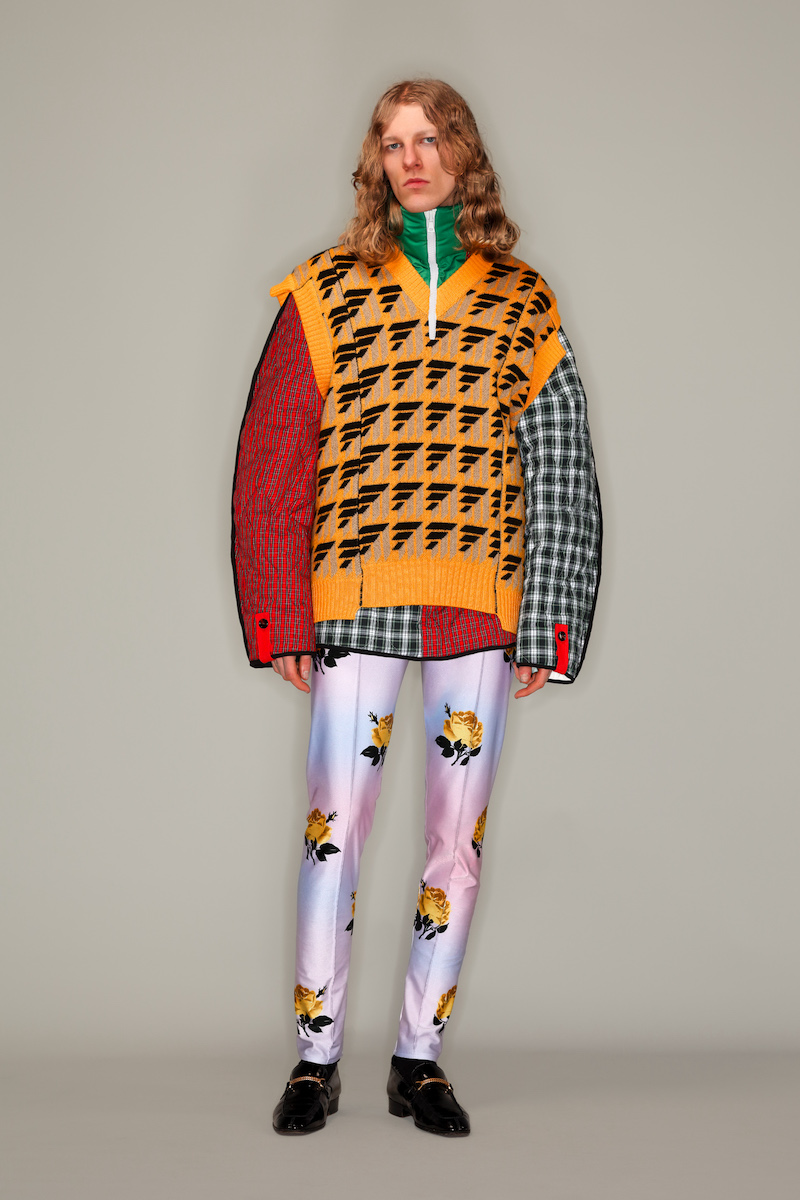
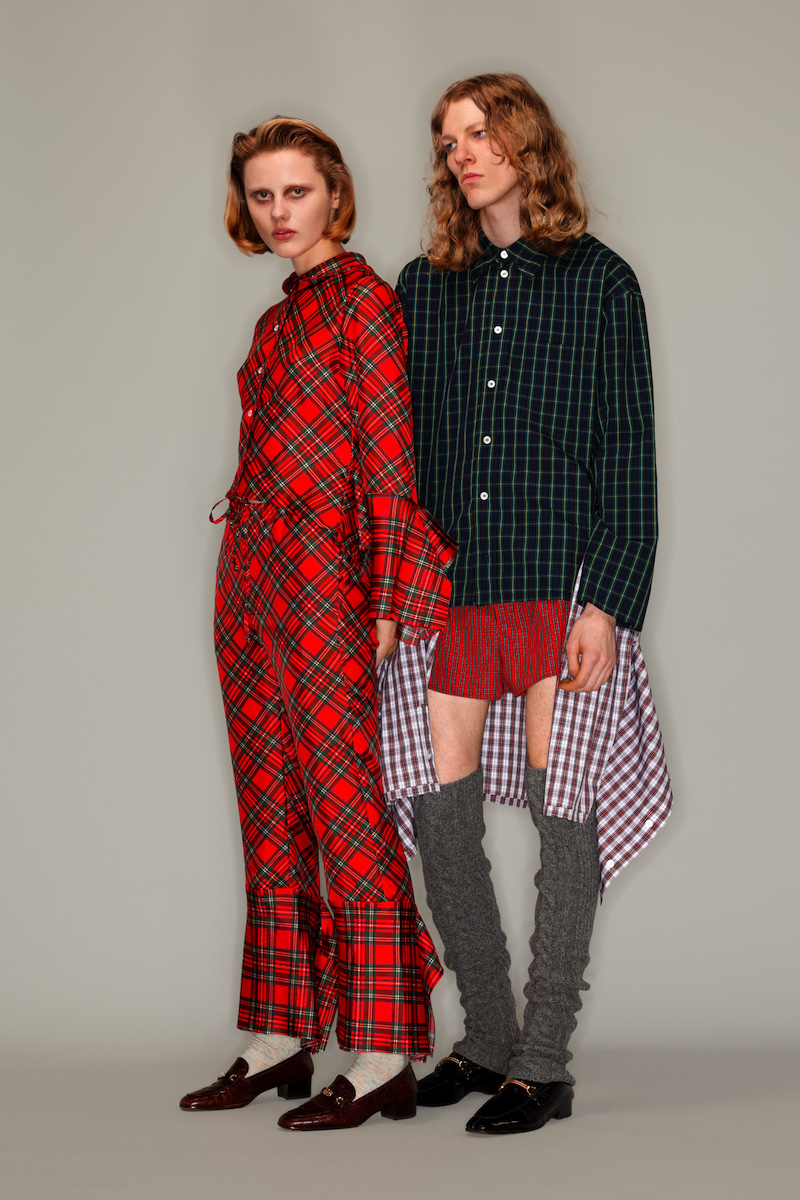
– I personally feel that lifestyle changes like marriage and childbirth in women designers’ lives are unconsciously reflected in their creations. As a mother of two children, ages two and seven months, do you believe there have been any changes within yourself?
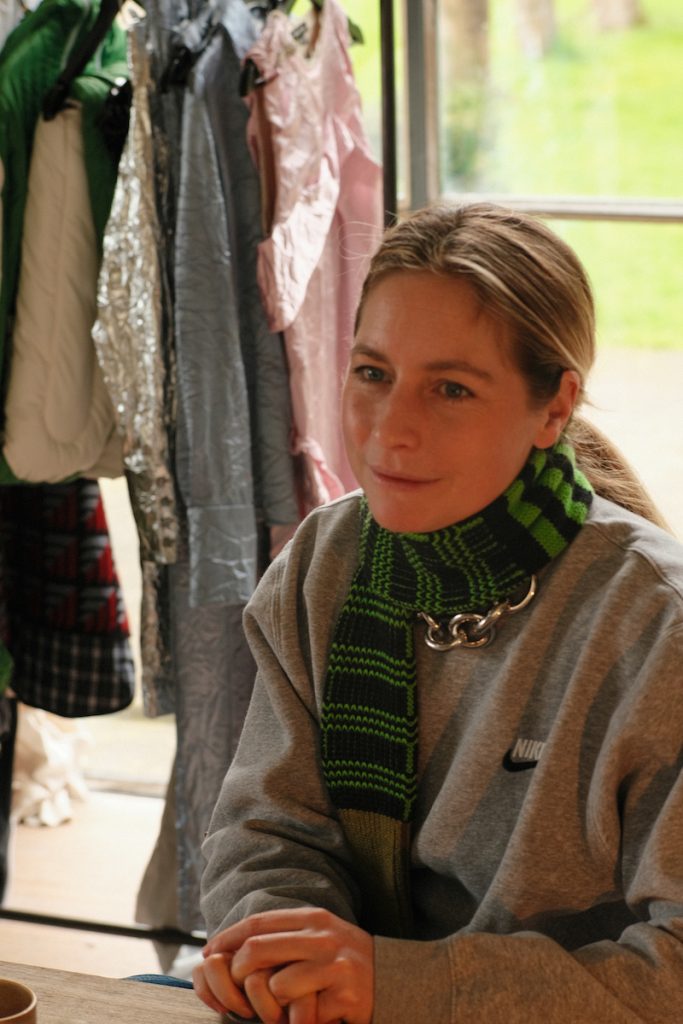
Rogge: That’s an interesting perspective. Since becoming a mother, I’ve incorporated more active, comfortable clothes like the Nike sweats I have on, and style myself with small, playful accessories. However, I keep in mind that my collections aren’t for myself, but are for dressing other people. I think COVID has had a bigger impact in terms of change. Comfort has always been an important concept, but now it’s become more present. We’re constantly thinking about combining comfort and design.
– Is there anything you’d like to express to the world through your collections?
Rogge: Meryll Rogge is a brand open to all, regardless of age or gender, offering clothing that express the many faces inherent in human beings. We want it to be a brand that brings out different aspects of someone and adds color to their daily life to fit their everyday moods. We blend boyish elements with a relaxed mood in our clothes; staples like cotton shirts and tailored pieces are given a twist, and feminine dresses are never overly sexy. Clients tend to be people involved in fashion and the arts, but those who aren’t also tend to have artistic sensibilities. In particular, I see Instagram photos posted by Japanese people wearing our clothes very stylishly. I want people to incorporate their own sensibilities and express their individual perspectives.
– I’m under the impression that you’re expanding more in Japan than in the rest of Asia. What are your thoughts on expanding your market into Japan?
Rogge: The Japanese market has been cooperative since I started the brand. I visited Japan three times in the past, and it left a lasting impression on me. I believe what’s more important than expanding our market is maintaining a good relationship with our buyers and customers. If possible, I’d like to create opportunities where we can interact with end users through events. Our Japanese distributors are like family – we’re close, and they do such a great job. The next step is to continue this relationship while deepening our communication with our customers. I’d like to keep seeing how the people of Japan style our clothes through Instagram!
Photos Dominique Brion
Edit Nana Takeuchi

